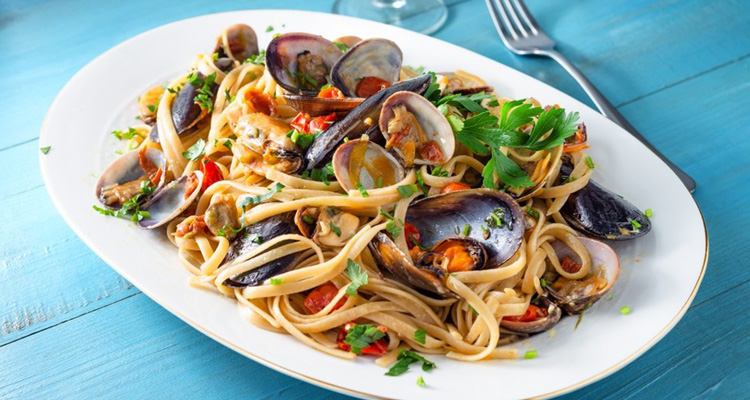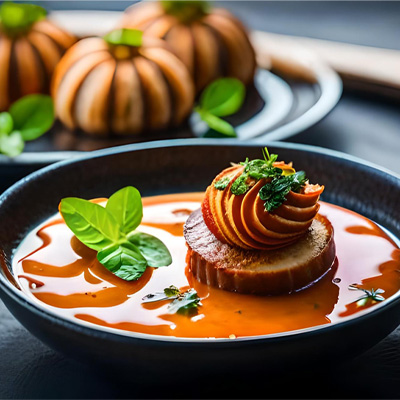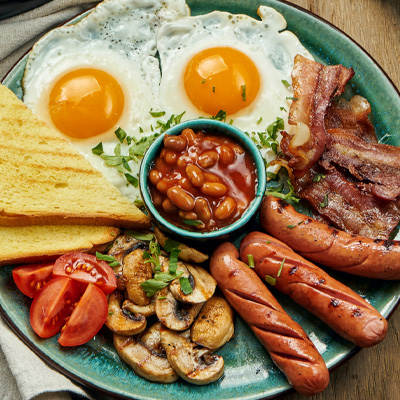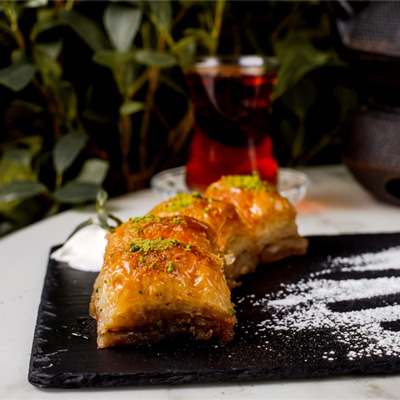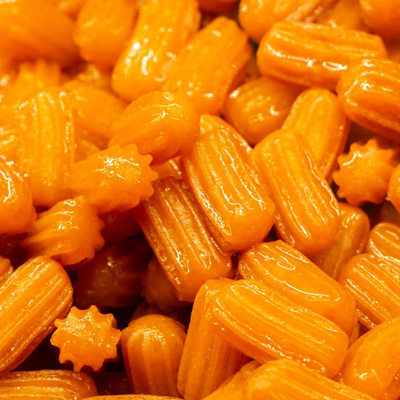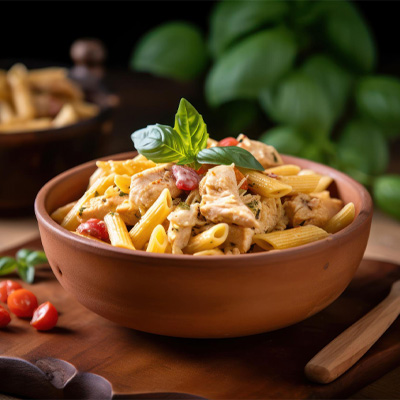Linguine allo scoglio, a mouthful of a name that promises a mouthful of flavors. This Italian seafood pasta dish has gained international recognition for its exquisite taste and the harmonious marriage of fresh seafood and pasta. In this gastronomic journey, we'll explore the rich history, the art of preparing this delectable dish, and tips for creating the perfect linguine allo scoglio.
Nutrition Facts
- Kcal
400 - Fat
6 g - Choles
150 mg - Sodium
600 mg - Carbs
50 g - Fiber
4 g - Sugar
4 g - Protein
30 g
Note: The nutrition facts are approximate values and may vary based on the specific ingredients used and any additional toppings or syrups added.
Ingredients
- 12 ounces (340g) linguine pasta
- 2 tablespoons olive oil
- 3 cloves garlic, minced
- 1/2 teaspoon red pepper flakes (adjust to your spice preference)
- 1/2 cup dry white wine
- 1 pound (450g) mixed seafood (e.g., shrimp, mussels, clams, and calamari), cleaned and deveined
- 1 can (14 ounces) diced tomatoes
- Salt and black pepper to taste
- 1/4 cup fresh parsley, chopped
- 1 tablespoon fresh basil, chopped
- 1 lemon, zested and juiced
- Grated Parmesan cheese for serving (optional)
Directions
- Cook the linguine pasta in a large pot of salted boiling water until al dente, according to the package instructions. Drain and set aside.
- In a large skillet, heat the olive oil over medium heat. Add the minced garlic and red pepper flakes. Sauté for about 1 minute, or until fragrant.
- Pour in the dry white wine and simmer for 2-3 minutes to cook off the alcohol.
- Add the mixed seafood to the skillet and cook for 3-4 minutes, or until the seafood is mostly opaque.
- Stir in the diced tomatoes and their juices. Season with salt and black pepper to taste. Simmer for another 4-5 minutes, or until the sauce thickens slightly and the seafood is fully cooked.
- Add the cooked linguine to the skillet and toss to coat the pasta with the seafood and sauce. Cook for an additional 2 minutes to heat the pasta.
- Remove the skillet from heat and stir in the fresh parsley, basil, lemon zest, and lemon juice.
- Serve the Linguine allo Scoglio hot, garnished with grated Parmesan cheese if desired.
A Taste of Italian Tradition
The Origins of Linguine allo Scoglio
Linguine allo scoglio, which translates to "Linguine at the rock," originates from the picturesque coast of Italy. The dish was born in fishing villages where the day's catch was transformed into a delightful pasta creation.
The Essential Ingredients
This dish features linguine pasta, fresh seafood like prawns, mussels, clams, and calamari, tomatoes, garlic, white wine, and a touch of spicy red pepper flakes. These ingredients come together to create a symphony of flavors.
Preparing the Perfect Linguine
The secret to a great linguine allo scoglio lies in the preparation. The pasta should be cooked al dente, and the seafood must be fresh. The sauce, made from garlic, tomatoes, and white wine, should be rich and savory.
The Art of Crafting Linguine allo Scoglio
Step 1: Sautéing the Garlic
Begin by sautéing finely chopped garlic in olive oil until it becomes aromatic. This forms the flavor base of the dish.
Step 2: Adding the Seafood
Next, add the seafood, starting with the clams and mussels. They should be steamed open before adding prawns and calamari.
Step 3: Creating the Sauce
As the seafood cooks, create a sauce with diced tomatoes, white wine, and a pinch of red pepper flakes. Simmer until the sauce thickens and becomes fragrant.
Step 4: Combining with Pasta
Finally, toss the cooked linguine into the sauce, allowing the pasta to absorb the rich flavors of the seafood and tomato sauce.
Regional Variations
Sicilian Linguine allo Scoglio
Sicilian variations of this dish often include additional ingredients like raisins, pine nuts, and saffron, adding a unique twist to the classic recipe.
Neapolitan Linguine allo Scoglio
In Naples, where seafood is abundant, you'll find variations featuring local catches like swordfish and anchovies, elevating the dish's coastal essence.
FAQs
What does "allo scoglio" mean?
A: "Allo scoglio" translates to "at the rock" in Italian, referring to the dish's coastal origins and the seafood often found near rocky shores.
Can I use frozen seafood for this dish?
A: While fresh seafood is preferred, high-quality frozen seafood can be used when fresh options are not available.
Is linguine the only pasta choice for this dish?
A: Linguine is traditional, but you can experiment with other pasta shapes like spaghetti or fettuccine.
What wine pairs best with linguine allo scoglio?
A: A crisp white wine, such as Pinot Grigio or Sauvignon Blanc, complements the seafood and tomato sauce beautifully.
Are there vegetarian versions of this dish?
A: Yes, you can make a vegetarian version by substituting seafood with mushrooms or artichokes for a delightful alternative.
Can I make linguine allo scoglio ahead of time?
A: It's best enjoyed fresh, but you can prepare the sauce and seafood in advance and toss with freshly cooked pasta just before serving.
Conclusion
Linguine allo scoglio is a testament to the culinary excellence of Italian cuisine. With its combination of fresh seafood, aromatic garlic, and tangy tomato sauce, it's a dish that has captured the hearts and taste buds of food enthusiasts worldwide. Whether you're savoring it in a coastal Italian trattoria or recreating it in your own kitchen, this seafood pasta promises a delightful gastronomic journey that is as rich as its flavors.
